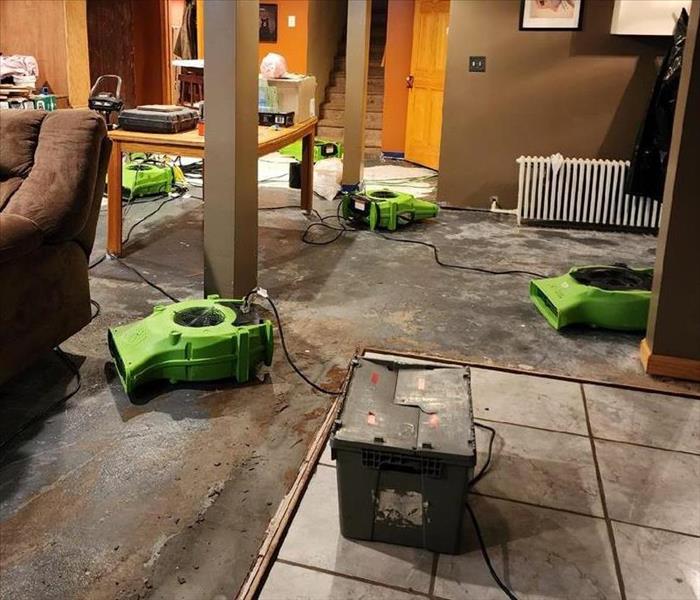Understanding the Risks After Flooding
10/21/2023 (Permalink)
Flooding is one of the most severe natural disasters, with the potential to cause significant damage to homes, businesses, and infrastructure. In addition to the immediate dangers that floodwaters pose, there are also risks that must be considered in the aftermath. In this blog post, we will explore the risks associated with flooding and discuss ways to stay safe during and after a flood.
Safety Risks Associated with Flooding
- Electrical hazards: Floodwaters can pose electrical hazards, such as downed power lines in or near the water.
- Slip and fall hazards: Floodwaters and debris can create slip and fall hazards, especially in areas where the water has receded.
- Structural damage: Flooding can cause significant structural damage to buildings, infrastructure, and roads, leading to collapses, sinkholes, and other dangerous situations.
- Fast-moving water: If you are caught in fast-moving water, the force of the water can sweep you away, leading to drowning or other serious injuries.
Ways to Stay Safe During and After a Flood
Stay on top of the latest updates on the weather and flooding conditions by monitoring local news channels or the National Weather Service. If an evacuation order is given, follow it immediately- do not wait. Delaying can put you and your loved ones in danger.
Avoid walking or driving through floodwaters. Floodwaters can be much deeper than they appear, and you may be at risk of being swept away by moving water. Additionally, floodwaters may contain dangerous debris, obstacles, and animals.
Don't touch electrical equipment
Do not touch electrical equipment, such as downed power lines. Wash your hands frequently if you come into contact with floodwaters or items that have been in contact with floodwaters.
After the flood, conduct a thorough check of your property for any safety hazards, such as structural damage or electrical outages.
Flooding is a devastating natural disaster that can leave a trail of destruction in its wake. From property damage to health hazards, the risks associated with flooding are numerous and require the utmost attention. It is crucial to understand the dangers that arise after a flood and take necessary precautions to stay safe. Whether it's avoiding contact with contaminated water, wearing protective gear, or seeking professional help for debris removal, staying informed and vigilant in the aftermath of a flood is essential for safeguarding ourselves and our communities.
By prioritizing safety and taking proactive measures, we can bounce back stronger and minimize the risks posed by flooding. Flooding can be a life-threatening situation if you don't take the proper precautions. Remember to stay informed, follow evacuation orders, avoid floodwaters, watch for electricity hazards, practice good hygiene, and check for safety hazards. By taking these steps, you can stay safe and minimize the risks associated with flooding.





 24/7 Emergency Service
24/7 Emergency Service
